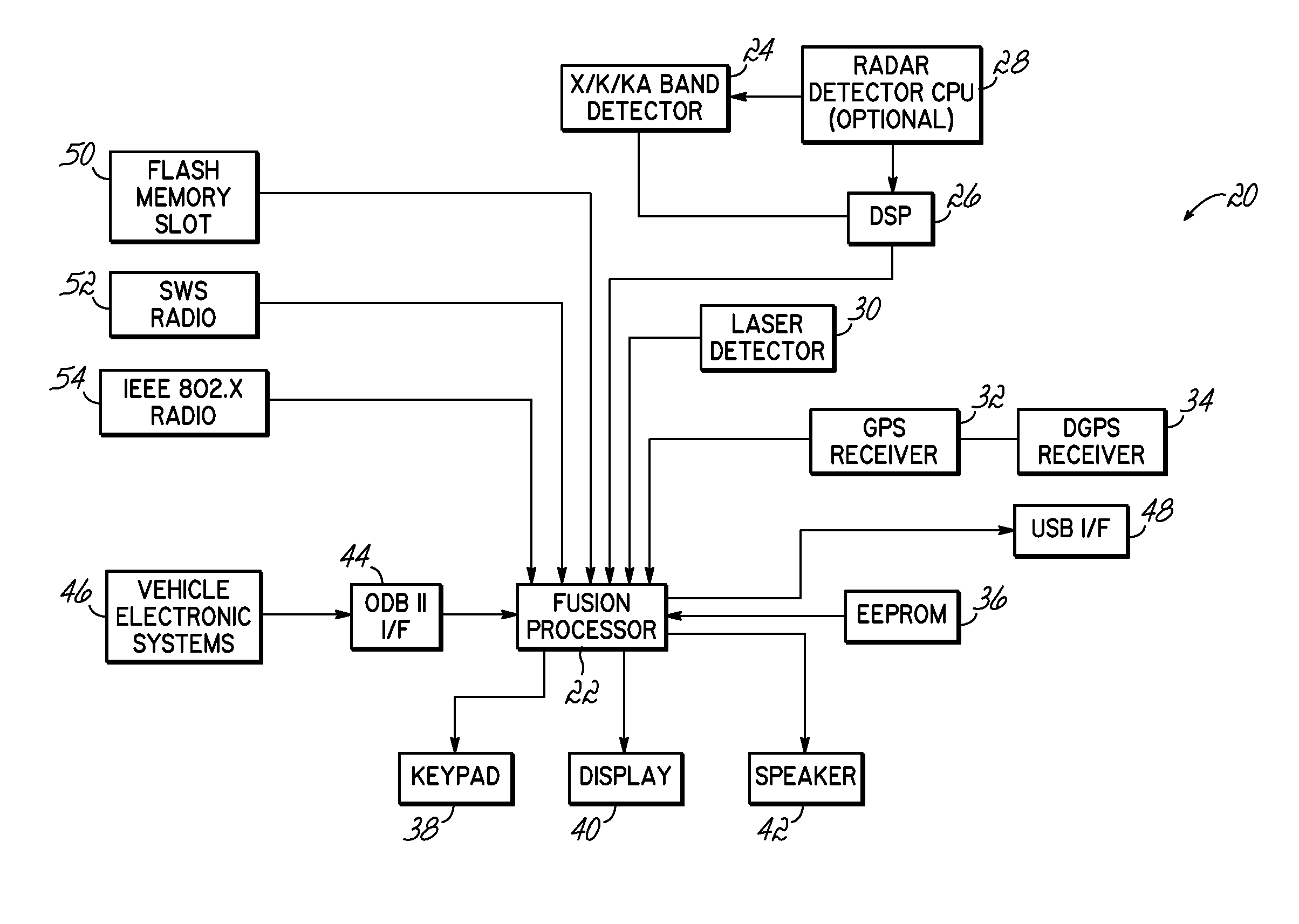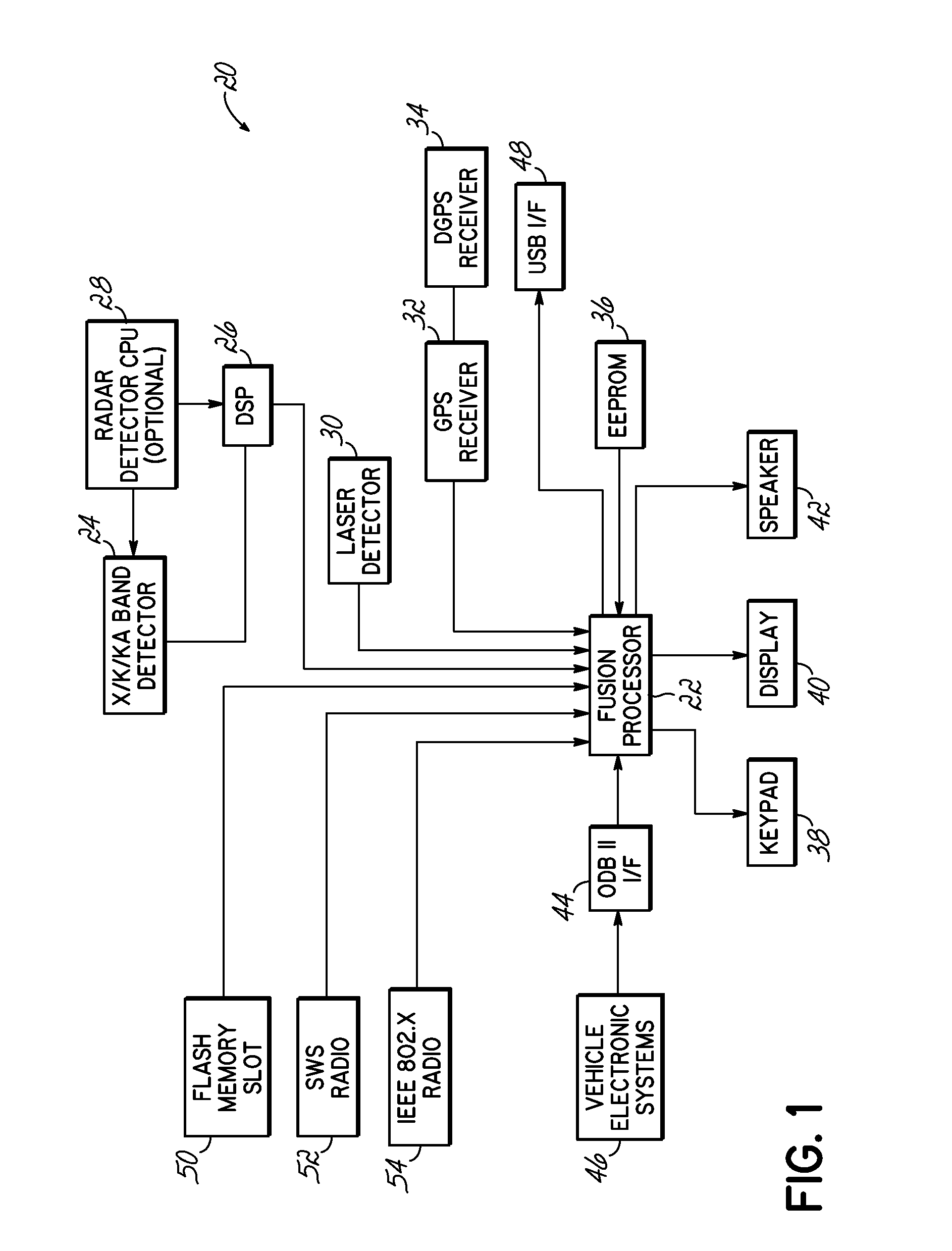Wireless Connectivity in a Radar Detector
a radar detector and wireless connectivity technology, applied in the field of radar detectors, can solve the problems of radar detectors not being able to tell the difference between the emissions of many of these devices and the emissions of true police radar systems, radar detectors increasingly generating false alarms, and undermining the credibility of radar detector performan
- Summary
- Abstract
- Description
- Claims
- Application Information
AI Technical Summary
Benefits of technology
Problems solved by technology
Method used
Image
Examples
Embodiment Construction
[0049]Referring now to FIG. 1, the radar detector 20 in accordance with principles of the present invention includes a processor 22 for controlling all functions of the unit. Processor 22 receives information on radar signals from a conventional X / K / KA band microwave receiver 24, coupled to processor 22 via a digital signal processor (DSP) 26. Microwave receiver 24 and DSP 26 may utilize any of the techniques described above and in the above-referenced patents, for rejecting noise and increasing discrimination between actual and spurious police radar signals. Further, receiver 24 and DSP 26 may be controlled by an optional second CPU 25, which can enable additional signal evaluation beyond that which is possible using a DSP.
[0050]Processor 22 is further connected to a laser detector 30 for detecting police LIDAR signals. Processor 22 is further connected to a GPS receiver 32 and a separate differential GPS (DGPS) receiver 34, such that differential GPS methodologies may be used wher...
PUM
 Login to View More
Login to View More Abstract
Description
Claims
Application Information
 Login to View More
Login to View More - R&D
- Intellectual Property
- Life Sciences
- Materials
- Tech Scout
- Unparalleled Data Quality
- Higher Quality Content
- 60% Fewer Hallucinations
Browse by: Latest US Patents, China's latest patents, Technical Efficacy Thesaurus, Application Domain, Technology Topic, Popular Technical Reports.
© 2025 PatSnap. All rights reserved.Legal|Privacy policy|Modern Slavery Act Transparency Statement|Sitemap|About US| Contact US: help@patsnap.com



